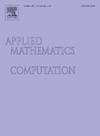Partitioning vertices and edges of graphs into connected subgraphs
IF 3.5
2区 数学
Q1 MATHEMATICS, APPLIED
引用次数: 0
Abstract
Arbitrarily partitionable (AP) graphs are graphs that can have their vertices partitioned into arbitrarily many parts inducing connected graphs of arbitrary orders. Since their introduction, several aspects of AP graphs have been investigated in literature, including structural and algorithmic aspects, their connections with other fundamental notions of graph theory, and variants of the original notion. Quite recently, an edge version of AP graphs, called arbitrarily edge-partitionable (AEP) graphs have been introduced and studied, with a special focus on their similarities and discrepancies with AP graphs.
In this work, we introduce and study a total variant of AP graphs, called arbitrarily total-partitionable (ATP) graphs, which essentially stand as a combination of AP and AEP graphs, for some particular notion of connectivity for sets of vertices and edges. We establish results of several natures, which we compare to known, similar results for AP and AEP graphs. In particular, we prove that, although the involved definitions are rather close, being AP, AEP, and/or ATP for a graph does not guarantee it also has the other properties. We also establish that deciding whether a tree can be partitioned in this total way is NP-complete in general, and provide sufficient conditions for ATPness in terms of longest paths. We finally raise directions for further work on the topic.
将图的顶点和边划分为连通的子图
任意可分割图(AP)是指顶点可以被分割成任意多部分的图,从而产生任意阶的连通图。自AP图被引入以来,已有文献对AP图的几个方面进行了研究,包括结构和算法方面,它们与图论其他基本概念的联系,以及原始概念的变体。最近,AP图的边缘版本,称为任意边缘可分割(AEP)图已经被引入和研究,特别关注它们与AP图的相似性和差异。在这项工作中,我们引入并研究了AP图的一种完全变体,称为任意全可分割(ATP)图,它本质上是AP图和AEP图的组合,用于某些特定的连通性概念。我们建立了几种性质的结果,并将其与已知的AP和AEP图的类似结果进行比较。特别是,我们证明了,尽管所涉及的定义相当接近,但对于图来说,作为AP, AEP和/或ATP并不能保证它也具有其他性质。在一般情况下,我们还证明了判定一棵树是否可以用这种总体方式进行划分是np完全的,并从最长路径的角度提供了atness的充分条件。最后,我们提出了进一步研究这一课题的方向。
本文章由计算机程序翻译,如有差异,请以英文原文为准。
求助全文
约1分钟内获得全文
求助全文
来源期刊
CiteScore
7.90
自引率
10.00%
发文量
755
审稿时长
36 days
期刊介绍:
Applied Mathematics and Computation addresses work at the interface between applied mathematics, numerical computation, and applications of systems – oriented ideas to the physical, biological, social, and behavioral sciences, and emphasizes papers of a computational nature focusing on new algorithms, their analysis and numerical results.
In addition to presenting research papers, Applied Mathematics and Computation publishes review articles and single–topics issues.

 求助内容:
求助内容: 应助结果提醒方式:
应助结果提醒方式:


